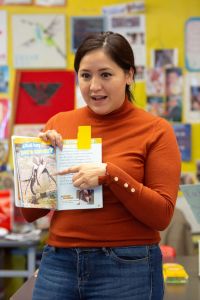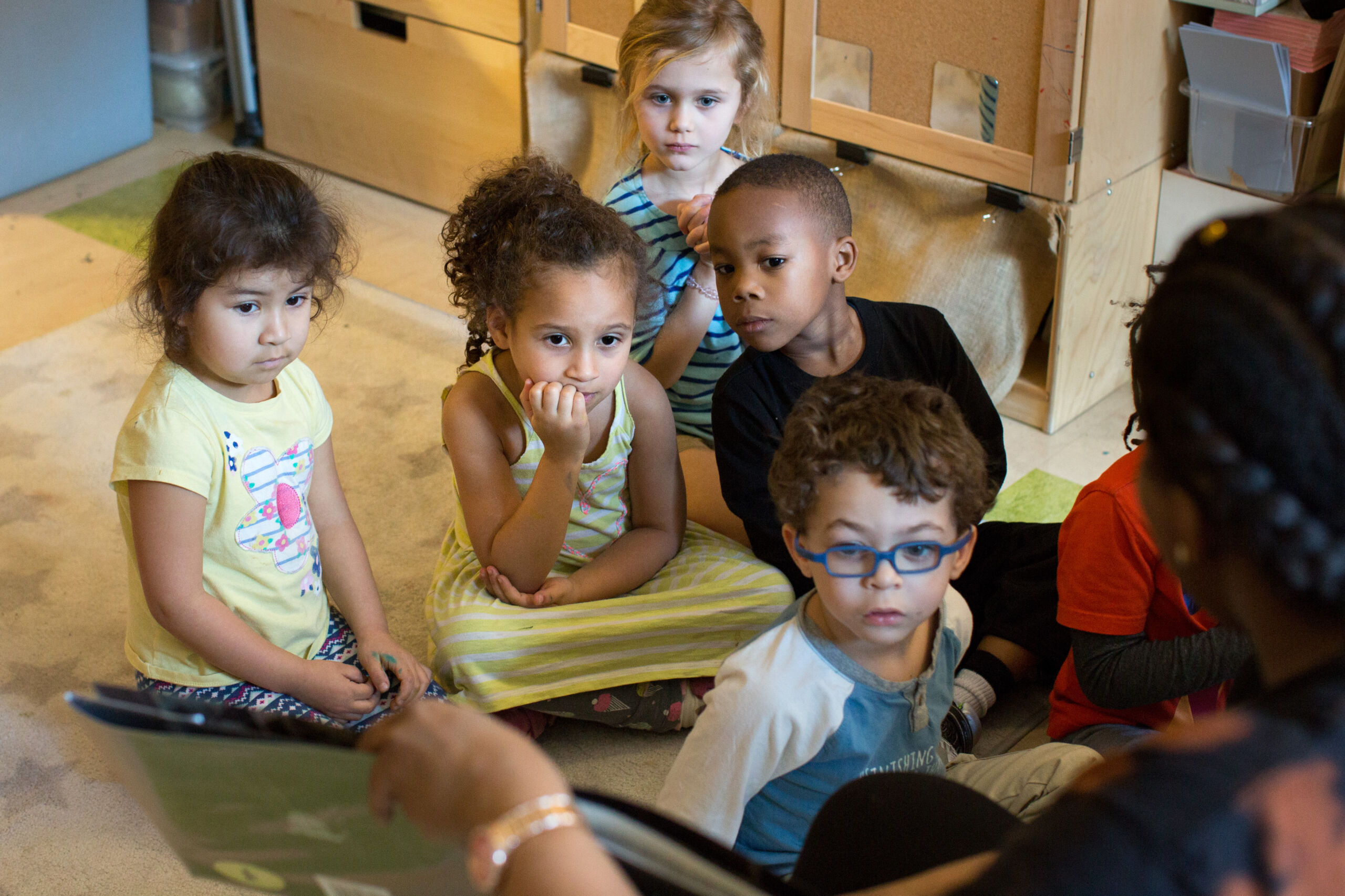Interactive read-alouds were one of my favorite things about teaching early literacy. It was an exciting moment as a teacher to be with my students and read a book. Engaging them in conversation, asking questions, building vocabulary were things that happened, of course! But, having a class community partaking in literature and enjoying the wonders of the written language was what I enjoyed the most. Looking back, I wish I had known some more about interactive read-alouds (IRAs) to make bigger connections for students and deepen their understanding of a text. Here are some of the concepts I have learned to incorporate for this literacy practice.
First, what is an interactive read-aloud or IRA for short (Educators love their acronyms)? I can tell you what it’s not. It is not picking a random book because you, as the teacher, like it. Also, reading a book for fun to your students as they regulate after recess. There’s nothing wrong with this; however, interactive reading is, well, interactive. It has a purpose within the literacy block to capture students’ attention and dive deeper into content while growing vocabulary and comprehension. It can be used at the beginning of a unit to spark interest with students on a new topic. It could be used across content areas to discover science concepts deeper or study social studies.
“Interactive reading has a purpose within the literacy block to capture students’ attention and dive deeper into content while growing vocabulary and comprehension.”
There are plenty of reasons to use an interactive read-aloud in the classroom. It allows the teacher to model fluent reading using expression and animation as they read the text. It can help build vocabulary, specifically academic Tier 2 terms (Myers & Ankrum, 2016). Think of reading texts such as informational and expository texts, poetry or plays to model reading various texts. Also, having strategic discussions placed within the read-aloud provides time for students to collaborate and create their own connections with text (Helbig & Piazza, 2020). This is a critical component as we want students to have ownership of their learning.
To get started, it’s fairly simple. Pick a text based on the content being taught and be intentional with the choice. Preview it and read it prior to reading it to students. Practice reading different parts of the text and being animated or expressive with it. Our role is to inspire students, so put on your best acting performance. Plan questions ahead of time and consider the student population. This may mean you co-plan with English language teachers and special education teachers to accommodate or modify to support all students.
“Our role is to inspire students.”

As you read the text, stop, reread to clarify, think aloud your thought process, pick strategic places to pause and ask questions. These are good practices for comprehensive fluent readers, and students need to see how these strategies work in action. When asking questions, provide the wait time it takes for students to process and make connections. Consider using a turn and talk for students to discuss their thinking before sharing (Giroir et al., 2015). To implement specific strategies, use a graphic organizer when engaging in an expository text (Helbig & Piazza, 2020).
After the IRA, consider having students write or draw. This provides a wonderful opportunity for students to connect and respond to text and take ownership of their learning. By allowing students to respond to the text, it gives us a chance to gauge student learning and help guide the next steps. Giving students this opportunity seals the practice of the read-aloud.
Interactive read-alouds are a simple process that takes intentional planning and preparation but increases student engagement and learning to boost comprehension and oral language skills.
So, as you begin planning your next reading unit, consider the various aspects of an interactive reading aloud. Incorporate a new strategy to learn vocabulary or implement a turn and talk while strategically asking questions. Think about using a graphic organizer for a difficult text to increase understanding. When we create intentional plans that have been clearly thought out with strong instructional practices, our students will be successful and engage in reading at a deeper level.
Resources
- Fisher, D., Flood, J., Lapp, D., & Frey, N. (2004). Interactive Read-Alouds: Is There a Common Set of Implementation Practices? The Reading Teacher, 58(1), 8–17. https://doi.org/10.1598/RT.58.1.1
- Giroir, S., Grimaldo, L. R., Vaughn, S., & Roberts, G. (2015). Interactive Read-Alouds for English Learners in the Elementary Grades. The Reading Teacher, 68(8), 639–648.
- Helbig, S., & Piazza, S. V. (2020). Let’s Read a Story!: Collaborative Meaning Making, Student Engagement, and Vocabulary Building Through the Use of Interactive Read-Alouds. Michigan Reading Journal, 53(1), 15–24.
- Myers, J. M., & Ankrum, J. W. (2016). Interactive Read-Alouds: A Vehicle for Explicit Vocabulary Instruction. Making Literary Connections, 31, 53–62.
Please login or register to claim PGPs.
Alternatively, you may use the PGP Request Form if you prefer to not register an account.



